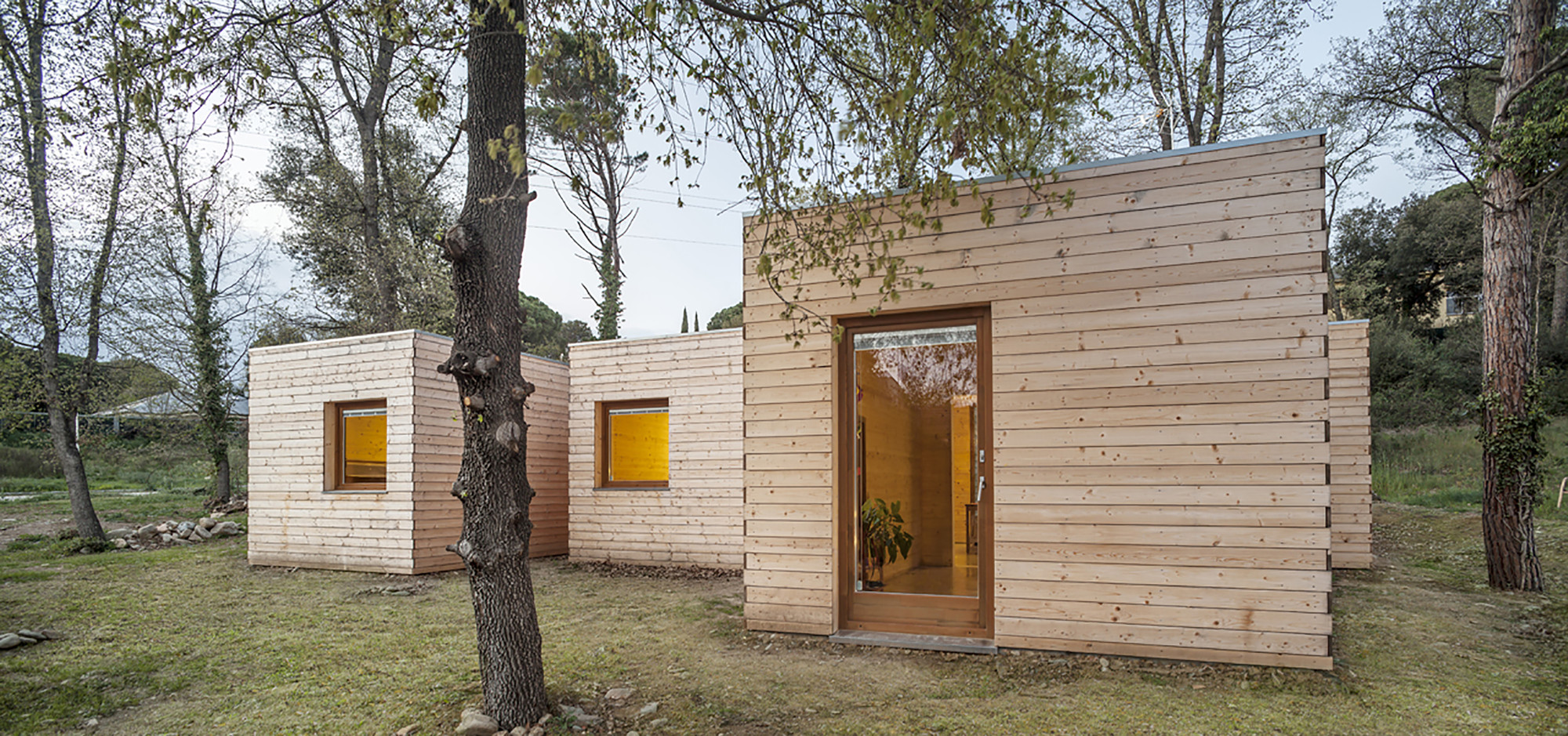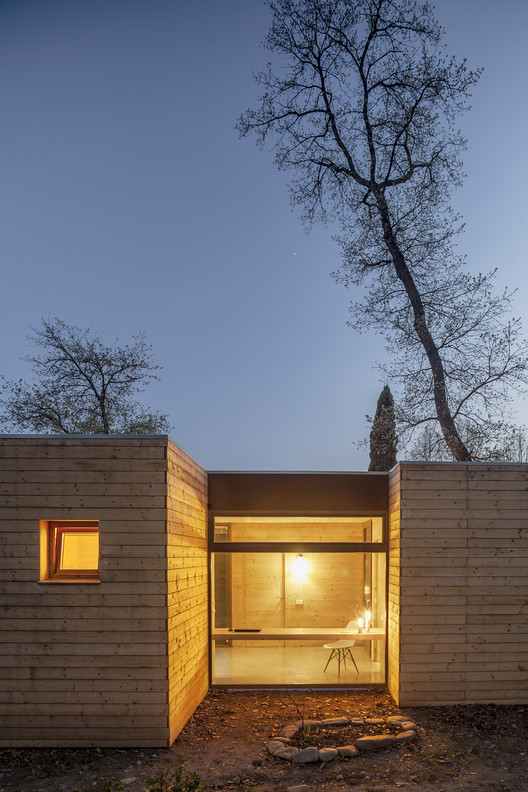

Text description provided by the architects. A commission with very clear premises: very tight budget, deadlines, and an energy-efficient construction.

With these starting points, we decided to design a completely prefabricated wooden modular construction that arrives at the site without the need for subsequent finishes, and is flexible enough to adapt to the morphology of the site. At the same time, we made a bioclimatic study and established design strategies to continue to improve comfort and reach the requirements in terms of energy demand established by passivhaus. These requirements, along with the transport limitations of prefabricated construction, generate 6 modules that adapt autonomously to the site respecting and framing the existing trees.

The interstitial space that joins them transforms based on comfort and the use of its inhabitants, becoming a solar collector during the winter with a greenhouse effect, and a covered outdoor terrace linked to the garden during summer.

The use of wood as the main material, for finishes and structure, makes us work almost exclusively with a single specialized industry and allows us to optimize the construction details and costs. At the same time we got the new construction to integrate and merge with the natural surroundings of Montseny characterized by its rich vegetation.

All of these strategies along with the use of an envelope with a high thermal resistance generate unbeatable features:

- Reducing the ecological footprint due to the use of materials found near the area where we built. The materials are natural, recycled and with a minimal natural impact (fir wood, cellulose, ...)

- We avoid condensation by using breathable materials.

- Reduction of 76.77% of the energy demand for heating compared to a house with a traditional construction and the same project features. The home is energy efficient.















